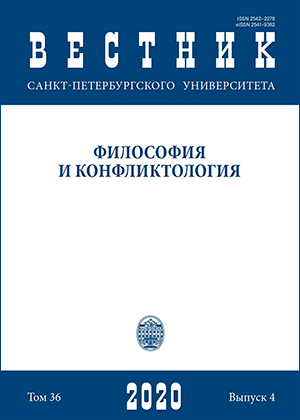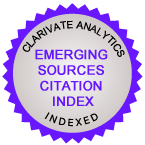Образ человека и визуализация политической коммуникации в эпоху постмодерна
DOI:
https://doi.org/10.21638/spbu17.2020.407Аннотация
Статья посвящена антропологическим проблемам человеческого образа, рассмотренным в истории культуры и философии ХХ в., с отдельным обращением к изучению современных процессов визуализации политической коммуникации как знаковых для эпохи постмодерна. В первой части статьи предлагается рассмотреть переход от эпохи модерна к эпохе постмодерна в контексте основных этапов в истории взаимоотношений слова и образа, языка и визуальности в европейской культуре ХХ в. Подробно анализируется понимание визуального образа как определяемого дискурсивными практиками и истолковываемого как текст в семиотической парадигме середины ХХ в., в первую очередь в сочинениях Р. Барта. Освобождение визуального образа от языкового дискурса, которое начинается в конце прошлого века, приводит к активному развитию визуальной антропологии, а радикальные изменения технологии воспроизведения — к изменению способов восприятия мира. В статье исследуются особенности функционирования существующих в публичном пространстве человеческих образов и связанные с их восприятием специфические проблемы современной визуальной коммуникации. Во второй части статьи характеризуются особенности формирования политических идеологий в эпоху постмодерна. Выделена система координат, в рамках которой развиваются постмодернистские политические идеологии. Тремя координатами политического постмодерна становятся исчезновение традиционных политических идеологий; революция техники; политические изменения 1980-х и формирование «монотонной политики». Обосновывается, что в эпоху постмодерна политические идеологии вынуждены минимизировать теоретическое обоснование своих фундаментальных оснований, обращаясь к новым визуальным и виртуальным формам пропаганды своих идей. Особенности включают в себя изменение формата политических практик, отказ от традиционных способов оформления политических идей, визуализацию и виртуализацию теоретической и практической составляющих политической деятельности. Раскрывается специфика театрализации политической практики и арт-активизма. Выделяются особенности современной политической коммуникации: функциональность, поверхностность, сетевой характер.
Ключевые слова:
образ человека, семиотика, Р. Барт, визуальная антропология и коммуникация, постмодерн, политические идеологии, протестные движения, арт-активизм, визуализация
Скачивания
Библиографические ссылки
Загрузки
Опубликован
Как цитировать
Выпуск
Раздел
Лицензия
Статьи журнала «Вестник Санкт-Петербургского университета. Философия и конфликтология» находятся в открытом доступе и распространяются в соответствии с условиями Лицензионного Договора с Санкт-Петербургским государственным университетом, который бесплатно предоставляет авторам неограниченное распространение и самостоятельное архивирование.






